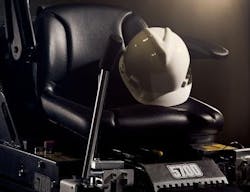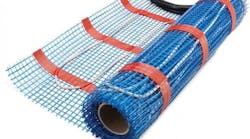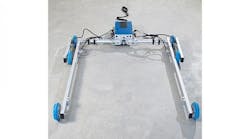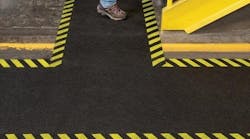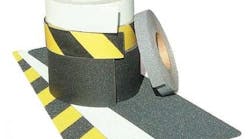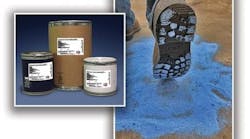Safety on the Floor
By Tom Dunn, Account Director at National Flooring Equipment
In 700AD, Emperor Charlemagne convinced his guests that he had supernatural powers with his magic table cloth, which he would throw into the fire, amazing his guests when it was removed unharmed. The magic behind this was simple – the table cloth contained asbestos, which cannot burn. Here Tom Dunn, director of major accounts at surface preparation expert National Flooring Equipment, discusses how to ensure workplace safety when using surface preparation equipment.
When renting out surface preparation equipment, it is the responsibility of both the hiring company and contractor that the equipment is used safely. One of the most important factors when planning the safe completion of a job is machine selection.
Choosing wisely
The rental company can work with the contractor to make equipment recommendations by asking questions to identify the specifics of the job. For example, the square footage of the area and what materials are being removed. As well as considerations about the removal itself, logistical information such as how many levels the job is over and the size of any available elevators, can also impact machine choice, as it can be difficult to maneuver large pieces of equipment in certain environments.
A simple fact-finding exercise helps contractors make sure they end up with a machine that suits the application at hand, which limits the health and safety risks. Once the contractor has selected the equipment, it’s important that it is used correctly.
Training
National Flooring Equipment recommends detailed equipment training for rental companies that stock surface preparation equipment. This way, the rental company can pass on its knowledge to improve the overall skills and safety of the contractor during the job. Better knowledge improves safety, increases efficiency and reduces the risk of damaging the machine.
Machine training can include how to prepare the site before beginning work and how to use the machine for the specific job required. Rental companies can access National Flooring Equipment’s free training in the USA and in Europe by visiting its online training library on its website, or by attending a dedicated training day.
Once the contractor has been directed on the best machine and how to use it, it is still advisable for the operator to test the equipment before using it on the proposed work surface. This is because each machine has subtle differences which the user should familiarise themselves with. The contractor can test a small, hidden area on the project site to establish the state of the concrete and show the customer what the finished result will look like.
Machine safety
Hire companies must inspect the machine before and after renting it out, to make sure everything is in order. The rental company should pay attention to the dust collection system, electric connections, cuts, and frays to wires and plugs, as electric components are a common cause of health and safety problems. A simple checklist will ensure nothing is missed and will create a record of equipment maintenance.
Assessing the job site
Prior to starting work on the site, the operator should survey the area to avoid any hazards or risks that could cause damage to the equipment. All electric connections and power supplies should also be properly checked to prevent any accidents.
Health and safety considerations can differ according to machine choice. By gathering an understanding from training, companies can learn the specific risks associated with each machine. For example, unlike battery-powered ride-on machines, walk-behind scrapers are usually tethered to an extension cable, which needs to be properly managed so the operator doesn’t get caught up in a trip hazard.
The operator should also be aware that scraper blades require maintenance. The blades are usually extremely sharp and need to remain this way. If the blade becomes dull, the operator should sharpen or change the blade with great care to avoid injury.
Worker safety
In many surface preparation jobs, containment of silica dust is a priority for the health of everyone on the operating site, as dust can become airborne from grinding, polishing, shot blasting and scarifying and can enter the lungs of the workers.
Once silica dust has entered the lungs, it will never be cleared. Given its carcinogenic properties and ability to cause silicosis, proper dust collection is extremely important. Silicosis, a severe, incurable condition which can be fatal, is caused by the formation of scar tissue within the lungs following inhalation of silica dust. The rental company can help contractors decide on the corresponding dust collection for the equipment it has selected.
Although silica dust isn’t as much of a concern when scraping, the operator may find asbestos when removing some floor materials. Specialist procedures, which vary depending on the type of material being removed, are available for dealing with asbestos.
Whatever the job, safety should be a priority. Rental companies can work together with contractors to make sure the job is performed safely. It’s not magic like Emperor Charlemagne’s tablecloth, but good communication and a detailed understanding of equipment mean that safety can be maintained.
